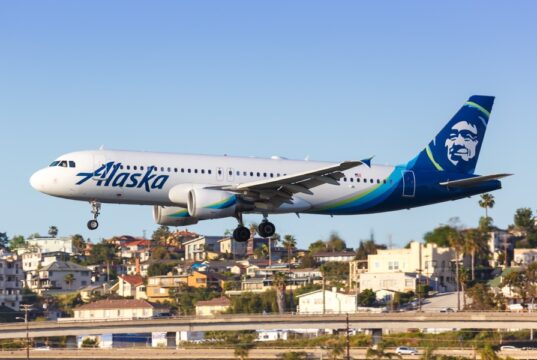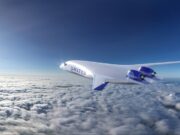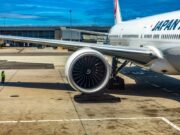On July 8th, Hurricane Beryl made landfall at Matagorda, Texas (approximately 90nm south-west of Houston’s George Bush Intercontinental – KIAH). As expected, air traffic disruptions ensued, and numerous flights were cancelled, delayed, re-routed, or diverted. As an example, Southwest Flight 1442 departed Dallas Love Field (KDAL) for Orlando International Airport (KMCO) and circumnavigated the hurricane eyewall and spiral bands. The flight track with weather-radar overlay shows Southwest Flight 1442 deviating 30-40 degrees left off-course from the filed flight plan, i.e., LNDRE5 Standard Instrument Departure (SID) that would have placed the aircraft near the hurricane eyewall.
Advancements in aircraft technology have allowed modern-day jet -propelled airliners to cruise at higher altitudes when compared to their propeller-driven predecessors. The convective activity around a tropical cyclone reaches the highest altitudes near the eyewall and most modern-day jetliners can climb over the convective tops. However, hazards such as windshear and turbulence make flying over a tropical cyclone impractical except for carefully executed operational/research flights (e.g., NOAA’s Gulfstream G-IV). The horizontal windshear, rising air near the convective tops and sinking air within the eyewall may not only result in extreme turbulence, but also environments ripe for a high-altitude aerodynamic stall.
There are numerous advantages to flying at higher altitudes such as a reduction in aerodynamic drag, increased engine efficiency and faster true airspeed (TAS). From a meteorological perspective, flying at higher altitudes allows pilots to overfly convective activity that harbor hazardous weather conditions such as icing and turbulence. The option to cruise at higher altitudes also helps pilots climb over pockets of clear-air turbulence (CAT). While flying over the eye of a tropical cyclone is an extreme example, overflying a developing thunderstorm cell may not provide the smoothest of flight conditions. Even a weak thunderstorm cell could produce updrafts approaching 1000-2000 ft/min.

Photo credit: Ajay Raghavendra, PhD
Turbulence should be avoided in the interest of safety, reducing the risk of injury to flight attendants and passengers, and overall comfort. Figure 1 shows cumulus clouds and overflying the convective tops at low altitudes may result in turbulent flying conditions. While numerical weather-model forecasts are useful to avoid turbulence on the synoptic scale, microscale and mesoscale turbulence associated with thunderstorms or orography are difficult for even high-resolution numerical weather models to resolve. Furthermore, weather radar cannot detect turbulence in clear air. To avoid turbulence, pilots may manipulate the on-board weather radar and monitor developing thunderstorm cells using variable tilt setting and circumvent the developing thunderstorm cells. “See and avoid,” scanning for cumulous cells using on-board weather radar, reports from ATC, and from the flight dispatcher are tools pilots can and should use to avoid thunderstorms.

































































































































